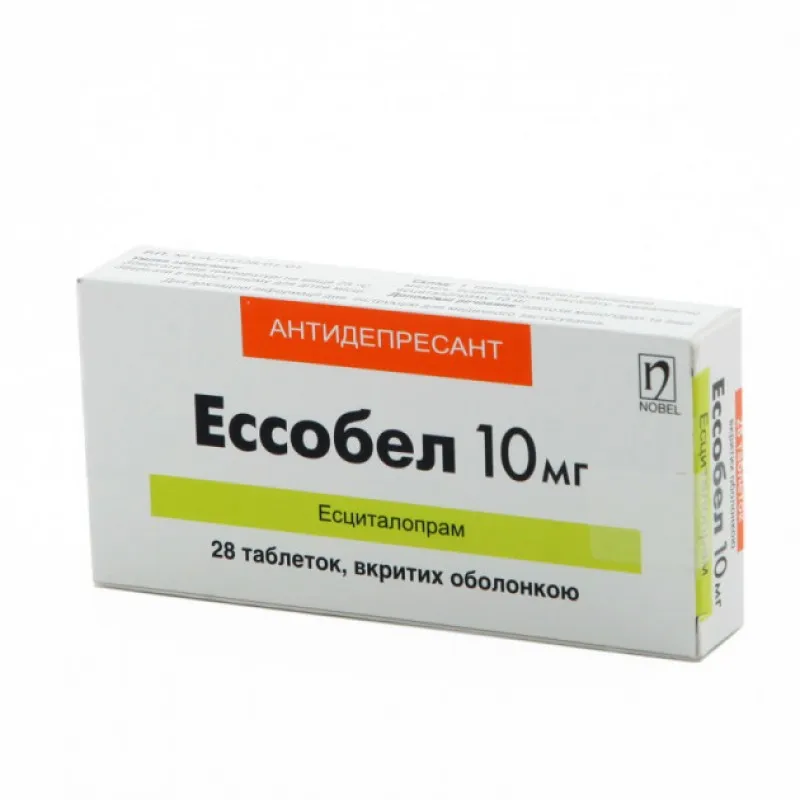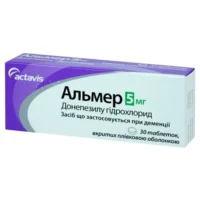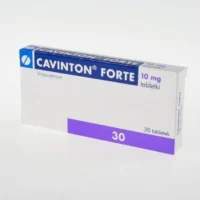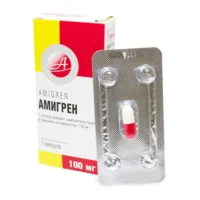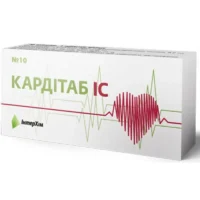Description
Essobel (Escitalopram) Coated Tablets 20 mg. №28
Composition
Each coated tablet contains 20 mg of escitalopram.
Mechanism of Action
Escitalopram, the active ingredient in Essobel, functions as a selective serotonin reuptake inhibitor (SSRI). It works by inhibiting the reuptake of serotonin in the brain, leading to increased levels of serotonin. This mechanism helps in regulating mood and alleviating symptoms of anxiety disorders and depression.
Pharmacological Properties
Escitalopram is a potent SSRI with high selectivity for serotonin reuptake inhibition. It has minimal effects on other neurotransmitter systems, making it a well-tolerated and effective treatment for mood disorders.
Indications for Use
Essobel tablets are indicated for the treatment of major depressive disorder and generalized anxiety disorder in adults. It is also prescribed for other anxiety-related conditions as deemed appropriate by healthcare providers.
Contraindications
Avoid using Essobel if you have a known hypersensitivity to escitalopram or if you are currently taking monoamine oxidase inhibitors (MAOIs). Combining these medications can lead to potentially serious drug interactions.
Side Effects
Common side effects associated with Essobel include nausea, dizziness, insomnia, and sexual dysfunction. In rare instances, the use of escitalopram may result in serotonin syndrome, particularly when used concomitantly with other serotonergic agents.
Usage Instructions
The recommended dosage of Essobel is one 20 mg tablet to be taken orally once daily. It can be administered with or without food, as directed by a healthcare professional. Do not alter the dosage or discontinue the medication abruptly without medical supervision.
Benefits Compared to Analogues
Essobel offers advantages over some analogues due to its favorable side effect profile, efficacy in treating both depression and anxiety disorders, and lower potential for drug interactions compared to older antidepressants.
Suitable Patient Groups
Essobel is suitable for adult patients with major depressive disorder and generalized anxiety disorder. It is generally well-tolerated in the elderly population, but caution is advised in children and adolescents due to the potential risk of suicidal ideation.
Storage Conditions and Shelf Life
Store Essobel tablets at room temperature away from moisture and heat. Check the packaging for the expiration date and do not use the product beyond the stated shelf life.
Packaging Description
Essobel is available in blister packs containing 28 coated tablets of 20 mg strength. The packaging is designed to protect the tablets from environmental factors and maintain their stability.
Clinical Evidence and Proven Effectiveness
Studies have demonstrated the efficacy of escitalopram in the treatment of major depressive disorder and various anxiety disorders. Clinical trials have shown that escitalopram significantly reduces symptoms of depression and anxiety, leading to improvements in overall quality of life for patients.

